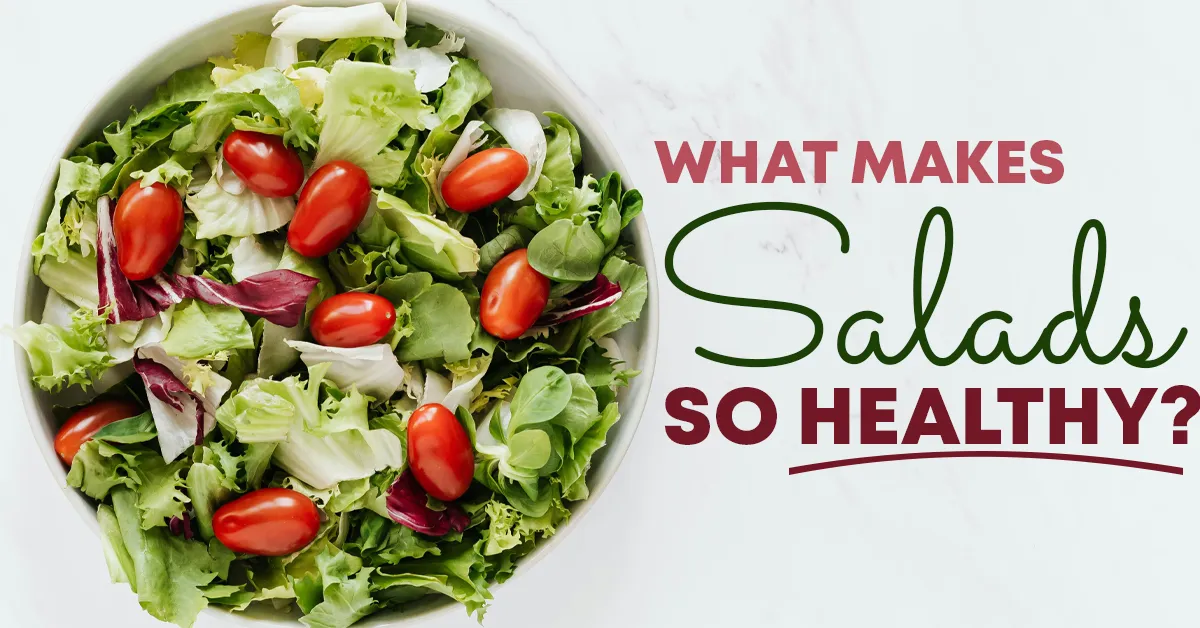In 2023 the packaged salad market was a $11.16 billion industry in 2023. It’s widely known that salads are a great choice for a fresh meal. What nutrients and health benefits make salads such a popular choice?
What Type of Lettuce is Healthiest?
The base of every salad is the leafy greens. It’s common to call those leaves “lettuce” but there are more than a dozen options, including many that are not lettuce, that you could in your salad.
When it comes to lettuce, the most popular kinds are iceberg, romaine, butterhead, and loose leaf.
Despite its popularity, iceberg lettuce is the least nutrient-dense base for your salad. Compared to other salad greens, iceberg has a fair amount of calcium. But it is packed with water and has less of every other notable nutrient. It is not that iceberg lettuce should be avoided, it just simply is not as strong of an option.
Romaine is the most nutrient-dense lettuce choice. It has high amounts of vitamins A, K, and C.
What Nutrients Make the Leafy Greens in Salad so Healthy?
Mix up your salads with a variety of greens. Kale and spinach are among the most nutrient-dense choices to include in your salad. If you buy a bagged salad, these two vegetables might be included in the mix.
The greens you use for your salad can be selected based on the health goals that are most important to you.
Vitamin A for vision and immune system support – Choose romaine
Vitamin C for immune system support – Choose kale
Vitamin K for heart health – Choose spinach or kale
Folate for heart health – Choose romaine or spinach
Magnesium for muscles, bones, and blood sugar Choose spinach
Potassium for nerve and muscle function – Choose spinach
Fiber for gut health – Choose romaine, kale, or spinach
Do Salads Help You Lose Weight?
Eating salads as a strategy for weight loss can be effective. Weight loss can be achieved through diet and exercise, and a salad can be a good dietary choice.
Salads are low in calories but high in fiber. This can make a salad filling enough to be your entire meal. As a result of fewer calories consumed, over time, salads could aid in weight loss success.
Healthy Ingredients to Add to Your Salad
Salads are all about vegetables, so why stop at leafy greens? Healthy (and sometimes crunchy) additions to your salad can include carrots, onions, cucumbers, celery, or broccoli. Each of these vegetables has its own nutrients and health benefits to round out your meal.
For even more crunch, add nuts or seeds. These can be great sources of fiber and help make your salad even more filling for long-lasting energy.
Lastly, add protein in the form of eggs or meat. Protein is a key nutrient that salads are missing.
What Makes a Bad Salad?
The salad dressing you choose can make a big difference. Most salad dressing (even fat-free dressing) is loaded with sugar! A better choice to keep your salad from being dry is to use oil and vinegar instead.
Croutons are another popular salad topping that is better off skipped. While croutons may add a nice crunch to your salad, you are better off using a vegetable like carrots for a satisfying crunch.


